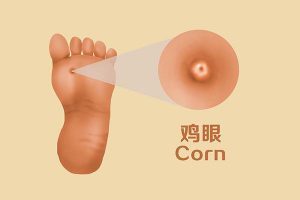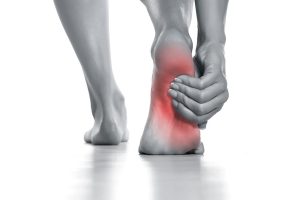Pain in the forefoot combined with hard skin is a common foot disorder. Possible causes include corns, warts, or plantar pain caused by uneven pressure. These problems look similar, but the treatment methods are completely different. Only by carefully distinguishing and seeking appropriate treatment can your problem be solved quickly.
Plantar pain? corn? wart?
People often confuse metatarsalgia, corns, and warts. Although the symptoms are all keratinous hyperplasia, the causes are quite different. Corns are also called fleshy thorns. They are thick cocoons formed by local squeezing and friction, resulting in the thickening of the epidermis. The affected area is shaped like a chicken’s eye. Warts are pain caused by papillomavirus infection.
Metatarsalgia is different. It is a relatively mechanical problem, that is, when our soles and toes have poor posture or poorly designed shoes, the pressure on the soles or toes of the feet is uneven, causing excessive pressure on certain parts of the feet. Even dislocation of the metatarsophalangeal joint will cause keratinous hyperplasia in a certain part of the foot under long-term compression, and finally, form a “callus”, that is, a “hard bottom”.
This syndrome is called metatarsalgia. Just like the claw-like toe mentioned before, the fingers will be pulled upwards, and the relative metatarsals will continue to push downwards. When the soles of the feet are under too much pressure, keratinocytes and pain will occur. On the surface, it looks like its symptoms are similar to corns or warts, but in fact, once metatarsalgia occurs, the patient’s bones may have been dislocated long ago, but he didn’t know it!

Only processing the surface is not good!
Often patients have symptoms of metatarsalgia, thinking it is corns, so they rush to buy some keratin softening medicine, or go to peeling, cryotherapy, or even go to the dermatology department. Of course, this kind of surface treatment can only treat the symptoms. It cannot cure the cause. Although the crusty is removed, the source of pressure still exists, then it will definitely grow back. Unless you never walk, plantar pain will follow like a ghost, silently occupying the soles of your feet.
In fact, plantar pain, corns, and warts seem to have the same symptoms, but they can still be distinguished: there is a black spot in the middle of the wart, but there is no corn. The proliferation of corn keratin is more concentrated, while the metatarsal pain caused by the corpus callosum is more scattered. It’s just that the general public is relative lacks common sense in this area, so they often generalize the three.
Therefore, people often go to the orthopedics department or go to the dermatology department when there are people with metatarsalgia. Of course, the orthopedist will ignore you because he is going to see the “orthopedic department.” If it is simple corns or warts, go to the dermatology department for treatment. The problem must be correct, but if your symptom is not corns, but plantar pain caused by uneven pressure distribution, it means that there is a problem with the structure of your foot, and you must look for foot and ankle surgery to see why.

Find the right doctor and use the right method to be effective!
How will foot and ankle surgery deal with the problem of plantar pain? First of all, we will first find out the root cause of the pain from the structure and pressure and give the patient the correct health education knowledge, and teach the patient how to maintain the toes and how to do toe exercises. Secondly, we must give patients the correct knowledge of wearing shoes, because most foot diseases are caused by wearing the wrong shoes: only shoes with average support and completeness are the best shoes. Then you may want to consider padding some mats.
Plantarache must be considered from the structural perspective to treat the symptoms and the root cause. If the above methods cannot solve your pain, then surgery must be considered. Surgical methods include: tendon relaxation, transposition, or shortening the bone after the dislocation is reset, and pulling the bone back a little can effectively reduce the pressure of the bone on the sole, maintaining a normal state, without deformation, and the pressure on the sole. More average.
Some people bought some shoes with very soft insoles because of plantar pain. In fact, that is not correct! Because this kind of shoe usually uses foam or hollow structure, the support is not enough, and it is more likely to cause uneven pressure. Just like people with back pain go to sleep on a softer bed, it will make the plantar pain worse! Because the shoes are too small, the toes are not extended enough to form claw-like toes, which will aggravate the symptoms of metatarsalgia! Therefore, if you want to choose protective gear and insoles to relieve the symptoms of metatarsalgia, it is best to consult a professional foot and ankle surgeon first to properly protect your ankle and avoid secondary injuries!

